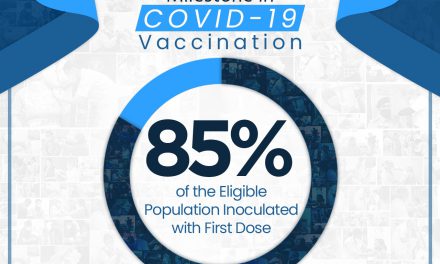India, amidst grappling with a rising incidence of cancer, particularly breast cancer, has also been a hub for innovations in cancer care and treatment. However, addressing the challenges posed by this disease requires a concerted effort to keep communities well-informed about its symptoms. Currently, with 1.4 million new cancer cases detected annually, projections indicate a surge to 2 million by 2040. Distinctively, 70% of cases in India are diagnosed at an advanced stage, unlike the global landscape where 70% are detected early.
Of particular concern is breast cancer, where nearly 60% of cases in India are diagnosed at stage III or IV, despite being easily screenable. Societal taboos often hinder open conversations about women’s health, contributing to delayed diagnosis.
In light of this, a crucial step in detecting breast cancer early is empowering women with information for recognizing and addressing irregularities through regular self-examinations. Lumps, often an initial sign, can be easily detected through self-breast exams.
While not all lumps are cancerous, ruling out the possibility through clinical screening is essential. Dr. Rajanigandha Tudu, Medical Oncologist at Ranchi Cancer Hospital and Research Centre, supported by Tata Trusts, emphasizes three fundamental aspects of breast self-examination:
- Consistency Check: Feel for the general size and shape consistency of both breasts.
- Skin Examination: Look for puckering or dimpling on the skin.
- Nipple Inspection: Inspect for any discharge from the nipples.
Here’s a step-by-step guide for a breast self-examination:
Step 1: Use the pads of your fingers (not the tips) and apply varying pressure – light, medium, firm – to feel the breast tissues. Step 2: Place your right hand on the back of your head and use the three middle fingers of your left hand to gently press down on the right breast. Step 3: Start navigating at the outer edges of your breast and move in a circular motion toward the nipple. Cover the entire breast in this motion and then move from the collarbone to the top of the abdomen. Step 4: Feel the breast tissue for any abnormalities – lumps, thickening, or changes in texture. Step 5: Gently squeeze the nipple to check for discharge and also check for changes in the appearance or direction of the nipples. Step 6: Repeat the process for the left breast.
A breast self-examination is more than a routine; it is a promise to prioritize well-being and a crucial step in understanding the symptoms of a potentially fatal disease if not detected early. Promptly responding to any changes during self-examination is crucial. It’s a monthly proactive step that should be followed by a clinical breast examination every three years, ensuring early and timely detection.
Every conversation and every self-examination has the potential to be life-saving.











